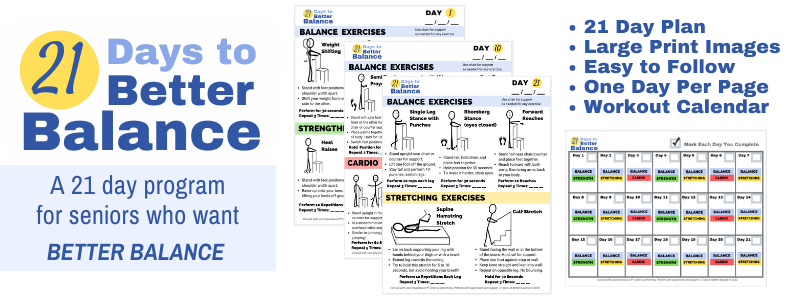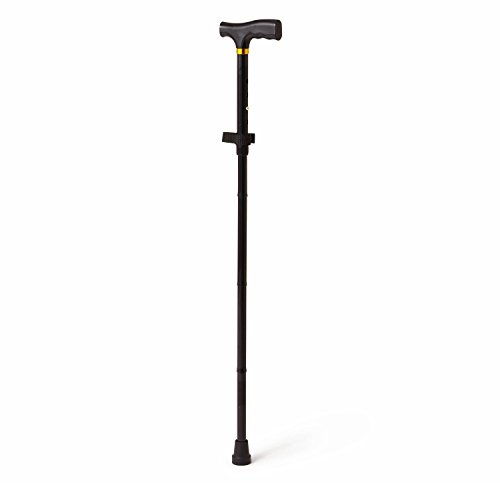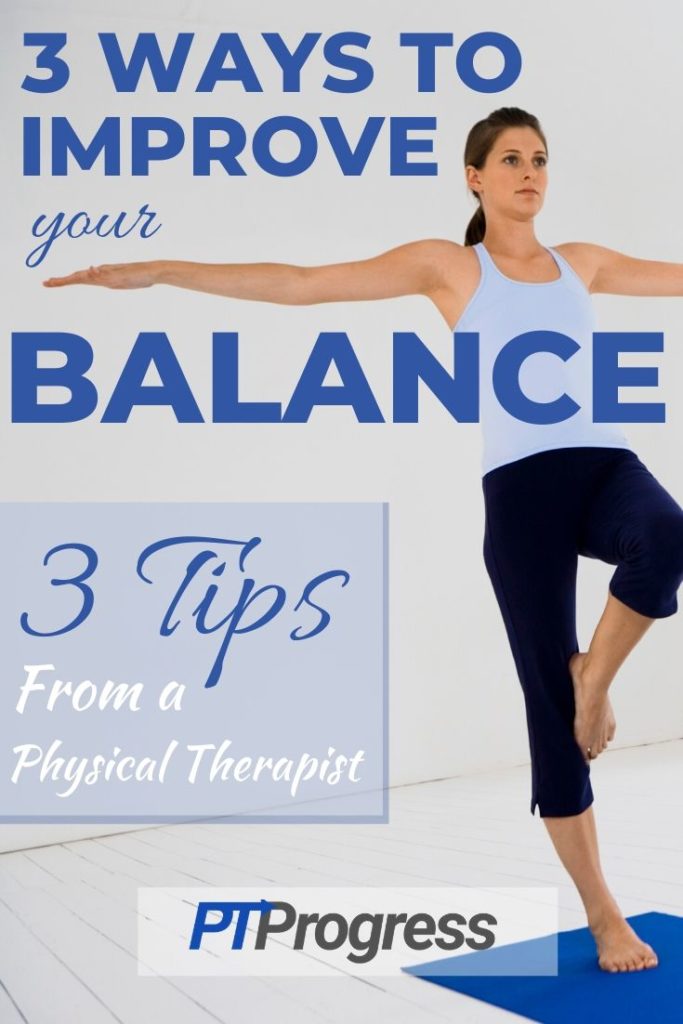
One of the most rewarding aspects of my job as a physical therapist is helping people improve balance.
Poor balance can affect people of all ages, but it’s definitely more of an issue with people 55 and older.
Here are the top 3 ways to improve your balance.
1. Focus on Strength Training
Stronger muscles can lead to better balance. The question is this: which muscles should we exercise if we want better balance?
Let’s take a look at three muscle groups to strengthen in order to improve our balance:
Calf Strengthening for Stability
Our ankles are the first line of defense for keeping use balanced throughout the day. The largest muscle of the lower leg is the gastrocnemius, or commonly referred to as the calf muscle.
The easiest way to strengthen the calf muscle is by performing calf raises.
How to Perform: Align your feel so they are shoulder width apart. Holding onto a countertop, raise up onto your toes holding this position for 1 second and lowering back to the ground. Repeat 15 to 20 times and perform 2 sets per day.
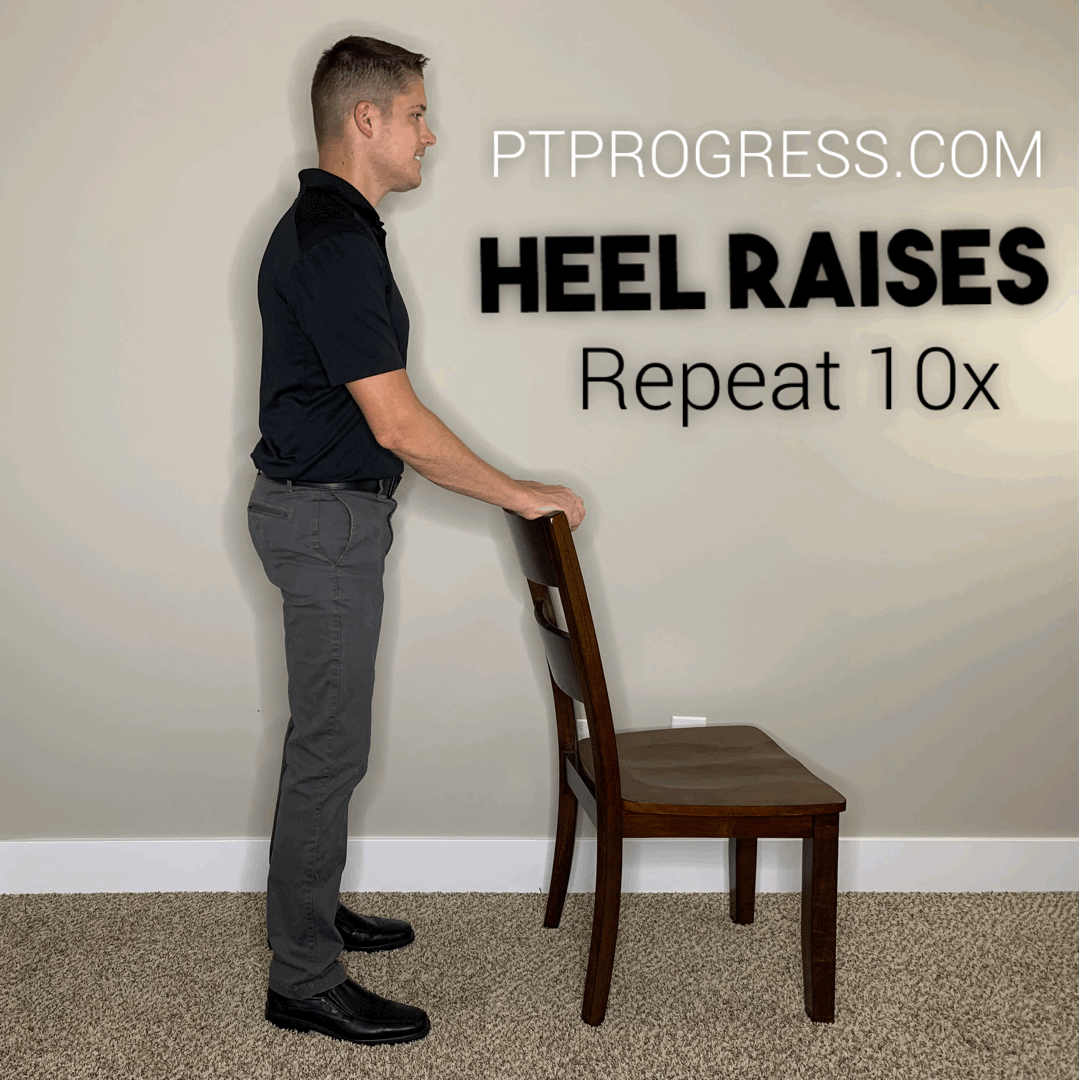
Hip Muscles Strengthening Tips
The second way our body works to keep us balanced is by using our hips muscles for support. When our hip muscles are weak (and for 99% of people who come to me in the clinic, their hip muscles are weak!) our balance suffers because we lack stability at the point where our legs and trunk connect. Here is one of the best hip exercises to work on for balance training: hip abduction.
How to perform hip abduction: Stand with your feet shoulder width apart and hold onto a countertop for support. Keeping the leg straight, extend your leg at an angle backwards and slightly to the side. Be sure to keep your body upright and avoid leaning as you perform this exercise. Perform 10 to 12 repetitions each side and repeat up to 3 sets.
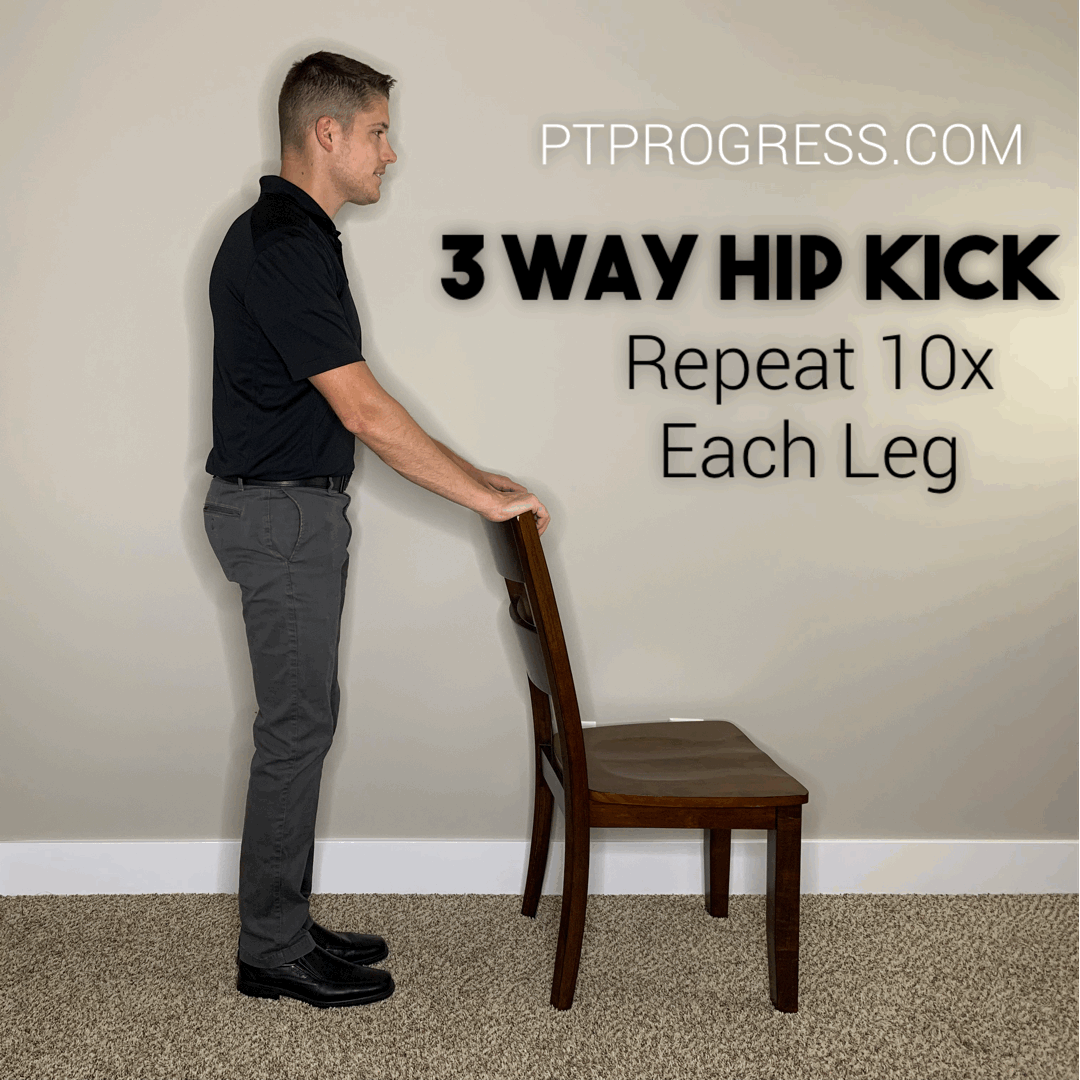
Abdominal Strengthening: Core Support
The third way our body uses to maintain our balance is called the trunk strategy. Our trunk muscles help to protect our spine and other vital structures and also enable us to perform complex movements with greater stability. The abdominal muscles are a critical part of this group of trunk muscles and should be addressed in a strengthening regimen. This abdominal exercise is good for improving stability and motor control of the abdominals.
How to Perform Bent Knee Fall Out: Lay on your back with one knee bent so your foot is flat on the ground. Contract your abdominal muscles – some people have an easier time doing this by coughing so they feel their abdominal muscles tighten. WIth abs engaged, lower your bent leg to the side. Your pelvis should remain level and avoid twisting with this movement. Return the leg to the center and repeat 10 to 15 times on each side.
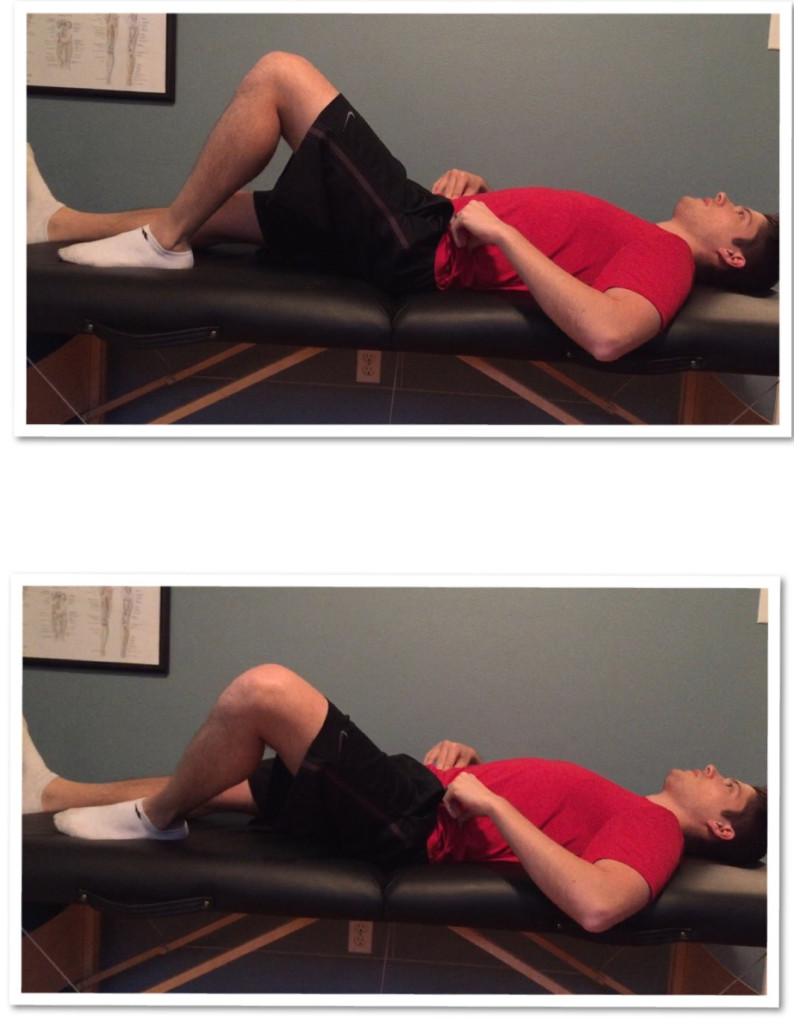
Not only does this work on lumbopelvic stabilization, it also forces you to focus on controlling your leg as it moves through the range. This type of precise movement training is very helpful for improving balance and stability.
Before starting any exercise routine, it is very important to check with a physician or physical therapist. The exercise ideas above are simply to provide inspiration on how you can make a positive impact on balance with exercises.
Why Is My Balance Bad?
There’s a number of reasons why your balance may be off. A recent injury, ankle sprain, surgery, or even an ear infection may cause you to experience bad balance.
From a strict age standpoint, our muscles, tissues, and organs change as we age. Our cells actually break down as we age and lose their ability to function as well as they may have when we were younger.
The same is true with our muscle tissue, which can lose mass quickly when we are less active. This is called atrophy and can lead to instability and poor balance because our body relies on muscles to keep us upright and balanced.
This is why strengthening is so important to include in balance rehabilitation.
Want the FULL Balance Guide?
Download my entire balance guide with over 40 exercises created by a Physical Therapist:
21 Days to Better Balance
2. Using a Cane or Walker to Improve Balance
When balance issues and instability are present after fall injuries or surgery, using a cane or a walker may be recommended by your doctor or physical therapist. Sometimes the use of a cane or walker is temporary as is the case following a knee or hip replacement.
But sometimes using a cane or walker is useful for long term stability. In either situation, a cane or walker provides extra stability which can improve overall safety and help you to be more active.
Which one should I use, a cane or a walker?
For someone who experiences an occasional loss of balance in the community or while walking outside, a cane may be sufficient to maintain your balance and avoid falling.
But for someone who has recently had a major surgery or has fallen multiple times due to a medical condition or significant decline in health, a walker may be the most appropriate tool for stability.
In either case, your physician or physical therapist will provide you with guidance on how to use a cane or walker and for how long you should be using it.
Do I Really Need a Cane?
A cane is one of the easiest ways to provide support and to prevent falling. If you’ve had a few ‘close calls’ and used furniture to stop yourself from falling, you would benefit from using a cane. With focused exercise and balance training under the supervision of a physical therapist, you may be able to see significant improvements to the point of walking without an assistive device.
Although using a cane may feel like it’s a hassle, it’s even more of a hassle to recover from a broken hip or ankle if you accidentally fall because you did not want to use a cane. Here are some of the best canes for balance issues.
- Travel-friendly design: The Medline Folding T-Handle Cane's compact and foldable structure makes it ideal for travel, easily fitting into suitcases or...
- High weight capacity: With a robust construction, this aluminum cane can support up to 250 lbs (113 kg), making it suitable for a wide range of users
3. Group Exercises Can Improve Balance
One of the best ways to stay active and to improve your balance is by participating in group exercise classes. Research has shown that participating in group exercise classes can improve balance and reduce fall risks. One study showed a 40% decrease in falls among people over age 65 who participated in a weekly group exercise class as well as home exercises.
As a physical therapist, I think group classes for Tai Chi, yoga, or other specific balance and exercise programs can be a great way to make progress with strength and balance. It also helps with accountability as I personally see how people are more likely to do their home exercises each week when they have a group class to attend. No one wants to be left behind in the class, so it’s motivation to keep working on your exercises at home!
Regardless of the type of exercise class you pursue, check in with your physician or PT to make sure you are safe to participate; the same is true for any home exercise routine you want to start.
A Final Note on Improving Balance
It’s important to know that balance can be improved but not overnight. Starting an exercise routine may be very challenging for some people but can be very beneficial for improving stability and balance. The same is true for using a cane or walker, even though many people may be opposed to using one right away.
For more information on balance exercises or strengthening routines, check out this list of exercises that can help with balance.
Want the FULL Balance Guide?
